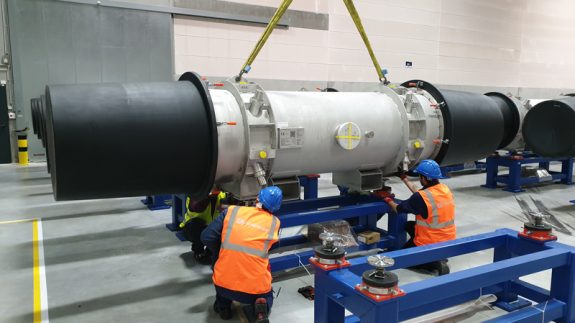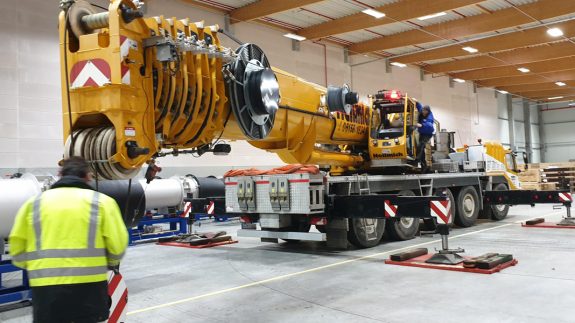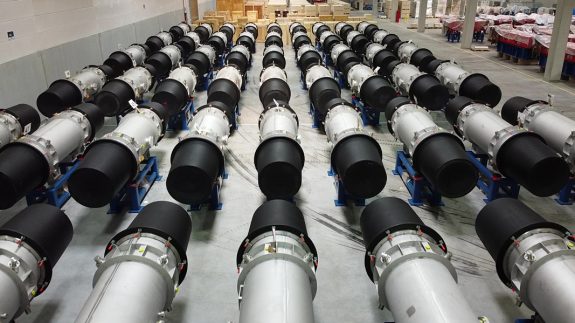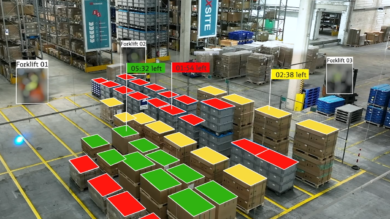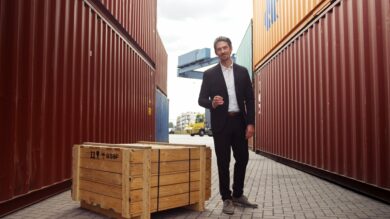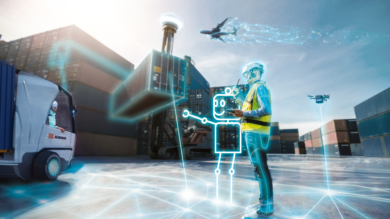Antimatter and research into the interior of neutron stars; Solving riddles on the formation and decay of atoms; Unveiling the secrets of the Big Bang: As a major international project, the FAIR particle accelerator center is currently under construction in Darmstadt, Germany. When this huge machine goes into operation, it will enable a wide range of physical research experiments. With FAIR, aspects of matter are generated and researched in the laboratory in ways that are otherwise only observable out in the universe. Researchers from all over the world expect new insights into the structure of matter and the development of the universe, from the Big Bang to the present day. Find out more about logistics operations for the FAIR particle accelerator.
The construction process of FAIR to date was documented in an impressive drone video in fast motion. Here, you can clearly see that essential parts of the new research facility – including the large central particle accelerator – are placed up to 17 meters below ground:
Heavy and highly sensitive: Dipole magnets
FAIR is located directly within the GSI Helmholtz Center for Heavy Ion Research and is connected to the research infrastructure there.
The centerpiece is the new heavy ion synchrotron SIS100 with its 1.1-kilometer-long circular orbit. Here, ions are accelerated at near-light speeds. To keep them on their path, 108 superconducting dipole magnets are used. Each of them is almost three meters long, weighs three tons, and can generate a magnetic field 40,000 times the strength of the earth’s magnetic field.

Logistics for the FAIR particle accelerator – by DB Schenker
Transport and storage of these highly sensitive magnets, along with many other components, is one of the core tasks of DB Schenker; as a logistics partner for GSI, it operates a 9,100 square meter warehouse in Weiterstadt, Germany, for a total of 24,000 components.
The dipole magnets are by far not the heaviest components within the project, but their handling is highly demanding. Harald Weiß, Project Manager of Business Development & Implementation at the responsible DB Schenker Rhein-Main/Frankfurt office, explains: “The magnets must first be calibrated and precisely adjusted in Darmstadt. This is followed by transport and storage at our facility in Weiterstadt, where they await final installation into the system. These are highly sensitive components that have to be moved with the utmost care. Even the smallest vibrations can lead to malfunction or damage. The magnets are therefore spring-loaded for transport and storage and equipped with shock sensors that document the mechanical loads throughout the entire process. So far, we have not been able to identify any undue load on any of the magnets.”
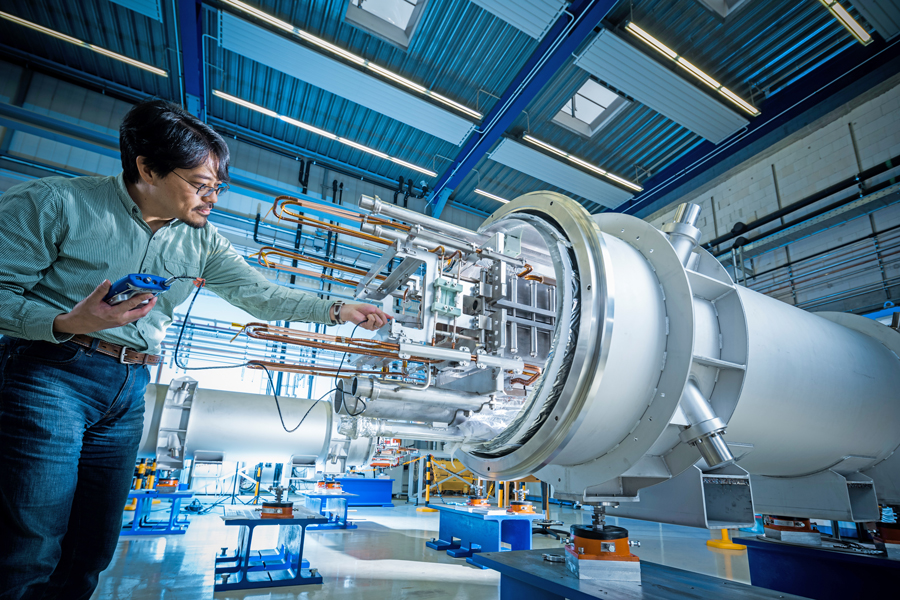
70 percent of the hall is now occupied with the planned components. The dipoles have firmly defined installation points in the system. The spatial storage strategy is therefore strictly based on the subsequent order of removal. This is the only way to prevent unnecessary movement of the valuable components.
The use of special cranes and assembly tools must be continuously scheduled and prepared. The equipment used always includes a 50 ton crane enabling the safe movement of massive electromagnets weighing around 35 tons.
The processes between GSI and DB Schenker in Darmstadt and Weiterstadt are based on many years of experience and are the result of the continuous exchange of information. Harald Weiß says of the collaboration: “We work with our contacts at GSI with an immense sense of respect and appreciation. It feels great to be a partner in such a unique scientific project. If exciting insights into the origins of our cosmos and matter are brought to light within the next few years, then our team will be proud to have made its contribution.”
Published: April 2021



